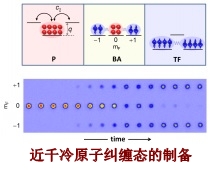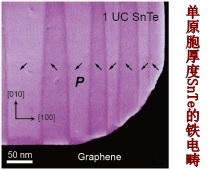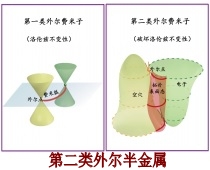



Prof. Pu Yu’s research group achieved a novel pathway to achieve the electric field control of magnetism through ionic evolution
On 18th, December, 2017, a research team led by Prof. Pu Yu (Department of Physics, Tsinghua University) published their research result entitled “Electric field control of ferromagnetism through oxygen ionic gating” in the journal of Nature Communications. In this work, using a simple resistive switch device architecture of Co/SrCoO2.5 heterostructure, the team has demonstrated an effective pathway to control the ferromagnetism in Co metal through the electric field controlled oxygen ion evolution within the oxide SrCoO2.5 layer.
Electric-field control of magnetism, i.e. magnetoelectric coupling, forms one of the key approaches to achieve next generation high-speed and low-power spintronic. Recently, researchers have proposed that oxygen ions in oxide materials can be utilized to effectively manipulate the magnetic properties of ferromagnetic metal layers in metal/oxide heterostructures, through the electric-field controlled reversible redox reactions within the metal layers. However, to facilitate the oxygen ion migration and necessary redox reactions, extended operating times (several seconds or even minutes) and elevated temperature conditions (~100 °C) are typically required. Thus, achieving high-speed performance at room temperature remains one of the main challenges before such simple architectures can be readily adopted in modern semiconductor technologies.
Among the complex oxides, the brownmillerite SrCoO2.5 (SCO) possesses unique oxygen-vacancy ordered crystalline structure, providing a suitable condition for the ionic transport. Early this year, based on this material Prof. Yu’s group has demonstrated an electric field controlled tri-state phase transformation with dual ion evolution. Inspired with the previous work, the SCO was employed in the current study as a potential fast ionic gate to realize the magnetoelectric coupling in metal/insulator (Co/SCO) junctions. The group has discovered that the simple device exhibits nice resistance switching behavior, i.e. the resistance can be switched between different states under external electric field. Interestingly, they have revealed that the magnetic property of Co layer is strongly correlated with the resistance state, thus showing nicely magnetoelectric coupling. They further proved that both behaviors are dominated by the ionic transfer at the interface, in which the variation of interfacial oxygen ion concentration modulates strongly both the interface resistive state and the magnetic anisotropy of the Co layer. Due to the rapid ion transportation at the interface and its independence to the bulk redox, the room-temperature device response speed is about four orders of magnitude faster than previous Co/GdOx systems, which could be further improved through device optimization.
The current study provides a solid foundation to combine the study of magnetoelectric coupling and resistance switch effects together, with potential for creating multi-functional devices compatible with modern semiconductor technologies.
 |
Prof. Pu Yu is the corresponding author of the paper, and Dr. Hao-Bo Li is the first author. The work was done with the close collaboration of a large group of people, which include Prof. Cewen Nan’s group at the School of Materials Science and Engineering, Tsinghua University, Prof. Lin Gu’s group and Prof. Kui Jin’s group at Institute of Physics, Chinese Academy of Science and Prof. Hui Liu’s group from Nankai University. The project was financially supported by National Basic Research Program of China, National Natural Science Foundation of China, The Initiative Research Projects of Tsinghua University, Strategic Priority Research Program of Chinese Academy of Sciences, and Beijing Advanced Innovation Center for Future Chip (ICFC).
The original link: https://www.nature.com/articles/s41467-017-02359-6
